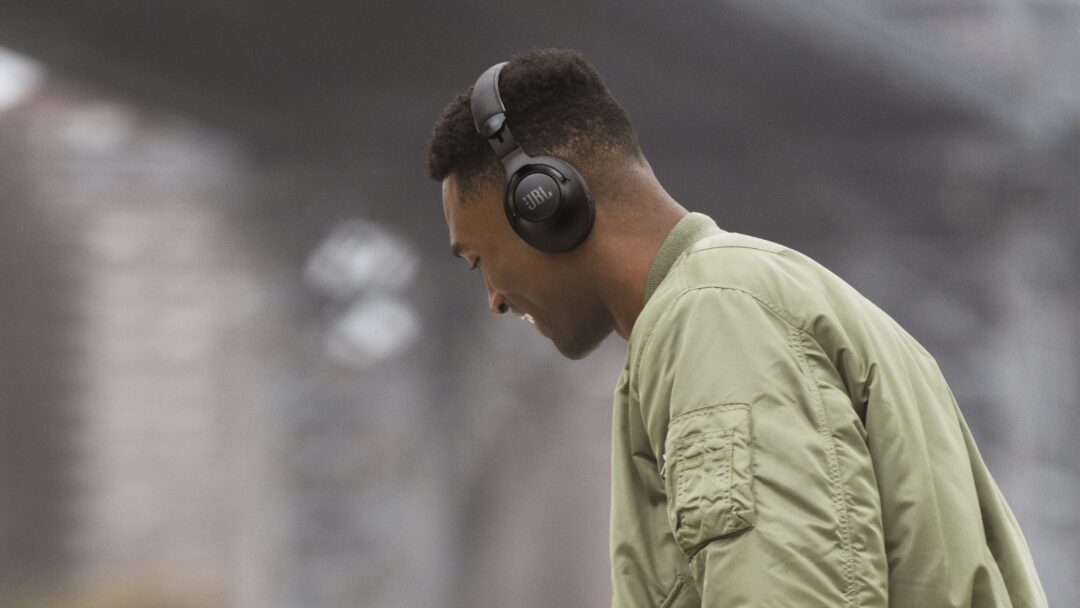Like literally everyone else, JBL has also spotted the ever-growing market for electronic noise reduction (ANC) headphones. We recently tested the mid-priced model JBL Club 950NC, but this time we are looking at the top model, JBL Club One.
The fact that there is money in noise-reducing headphones in the premium class is evidenced by the rapidly growing selection. We tested a dozen of the absolute best in January, and more have been added in the meantime. Among the newcomers are the long-awaited Sony WH-1000XM4.
Robust look
JBL Club One is confusingly similar to the little brother Club 950NC: Relatively heavily built headphones with oval ear cups and soft imitation leather upholstery on ear pads and headband. Everything is kept in black – even the JBL logo on the ear cups, which are printed in glossy black on a matte black background.
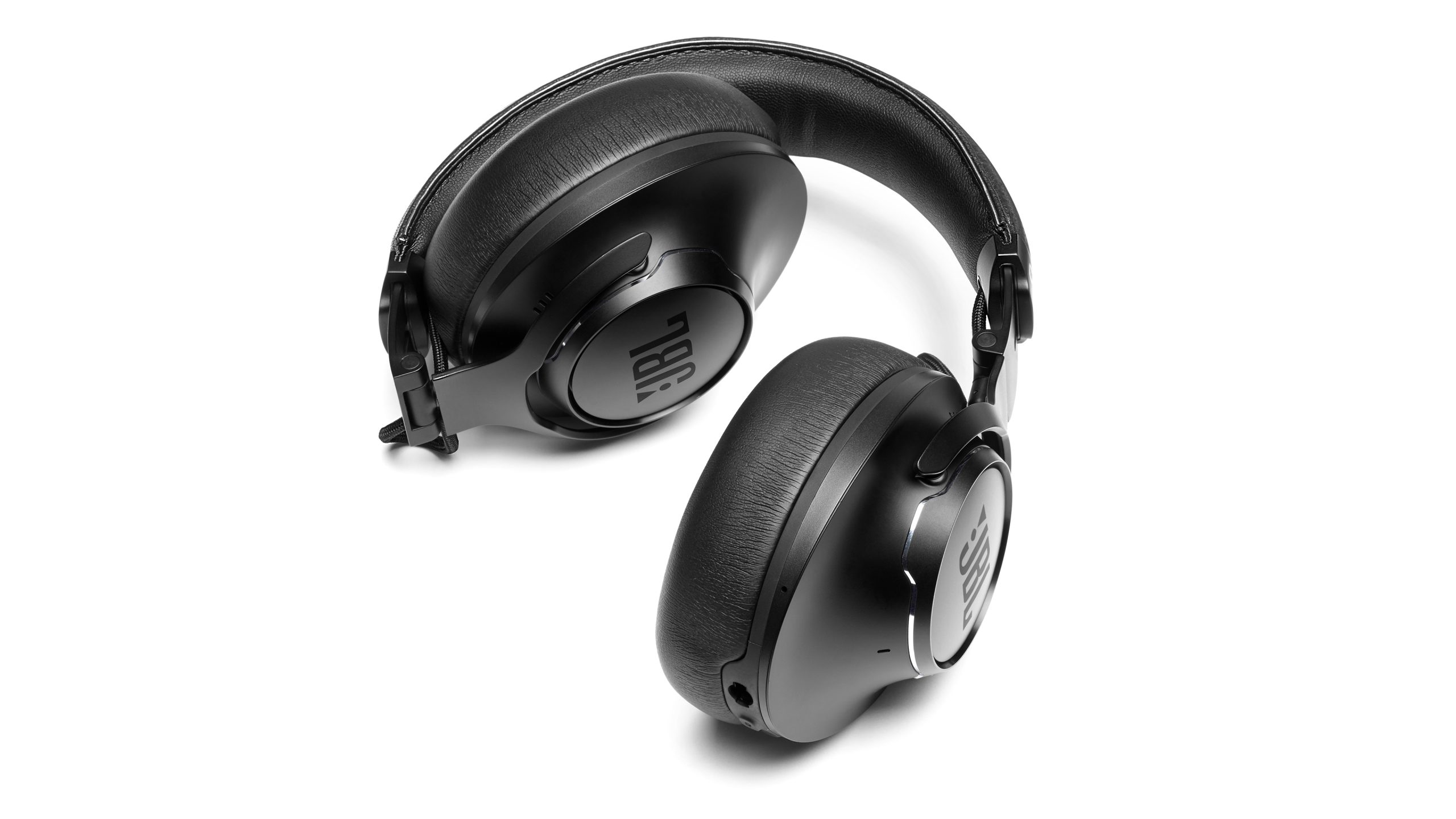
The headphones are heavily built with metal headband and generally seem to be able to withstand being taken everywhere – as is the fate of travel headphones. The drivers are also protected behind a metal grid, which in turn is covered by a thin nylon net. It all seems solid and quite trustworthy. But neither with the same elegance as Sony nor Bose. Or for that matter the feeling of luxury you meet at Bang & Olufsen and DALI.
The robust feel is reflected in the wearing comfort. JBL Club One is stable. But not with the ease and comfort that characterizes the ANC headphones from Sony and Bose. They are noticeably heavier and sit tighter.
Cables for everything
There is a little more equipment in the package than was the case with the Club 950NC. In addition to the travel case and a short cable for use with mobile phones with minijack output, you also get a good, old-fashioned spiral-twisted headphone cable that brings back memories of the headphones from my youth. There is also a USB cable for charging as well as a 6.3 mm jack adapter for full-sized stereo amplifiers. And an aircraft adapter. In other words, you are guaranteed a connection in almost every conceivable situation.
Little Brother Club 950NC was criticized for lacking high quality codecs like aptX, LDAC and AAC. The same is true of Club One. And so much the more surprising when we are dealing with luxury-class headphones. That they still sound really good is then a fact that we will return to later.
Control with Google and Alexa
Voice control is done using Google Assistant or Amazon Alexa. The latter is only relevant for speakers of the bigger languages. If you speak one of the Scandinavian languages, like Danish, Google is the only option. Physical operation is done with a total of six push buttons distributed along the back edge of the two ear cups.
At lot of attention has been paid to the audio cables, as they are not just included as a spare. In fact, the JBL Club One is better with cable. You can either choose to use the headphones completely passively, ie with all the electronics off. In that situation, the frequency range is expanded by one octave on each side of the audible range. Or you can use them in active mode, only with cable instead of Bluetooth. In that mode, you still enjoy noise reduction and DSP tuning, including the DJ audio profiles.
Get the sound ruined by star DJs
The Club Series models provide access to a feature called Stage+ in the app. Here you can choose from five different equalizer settings that match the signature sound of five leading DJs.
In the test of the JBL Club 950NC, I doubted that the sound in the five settings was really selected by Armin van Buuren, Sunnery James, Nicky Romero, Tigerlily and Ryan Marciano, respectively. I was wrong. The Harman group, which owns JBL, has since confirmed that this is indeed the case. It is the mentioned DJs who have been responsible for the setting of the five profiles.
Thus enlightened, I must say that the DJ profiles still totally ruin the sound! At least if one is meant to hear the music as it sounded on the recording.
More interesting is the Custom EQ function, where you can draw the frequency curve you prefer with your finger. Both EQ and DJ settings are stored in the headphones, so you do not have to have the app open to get your favorite sound.
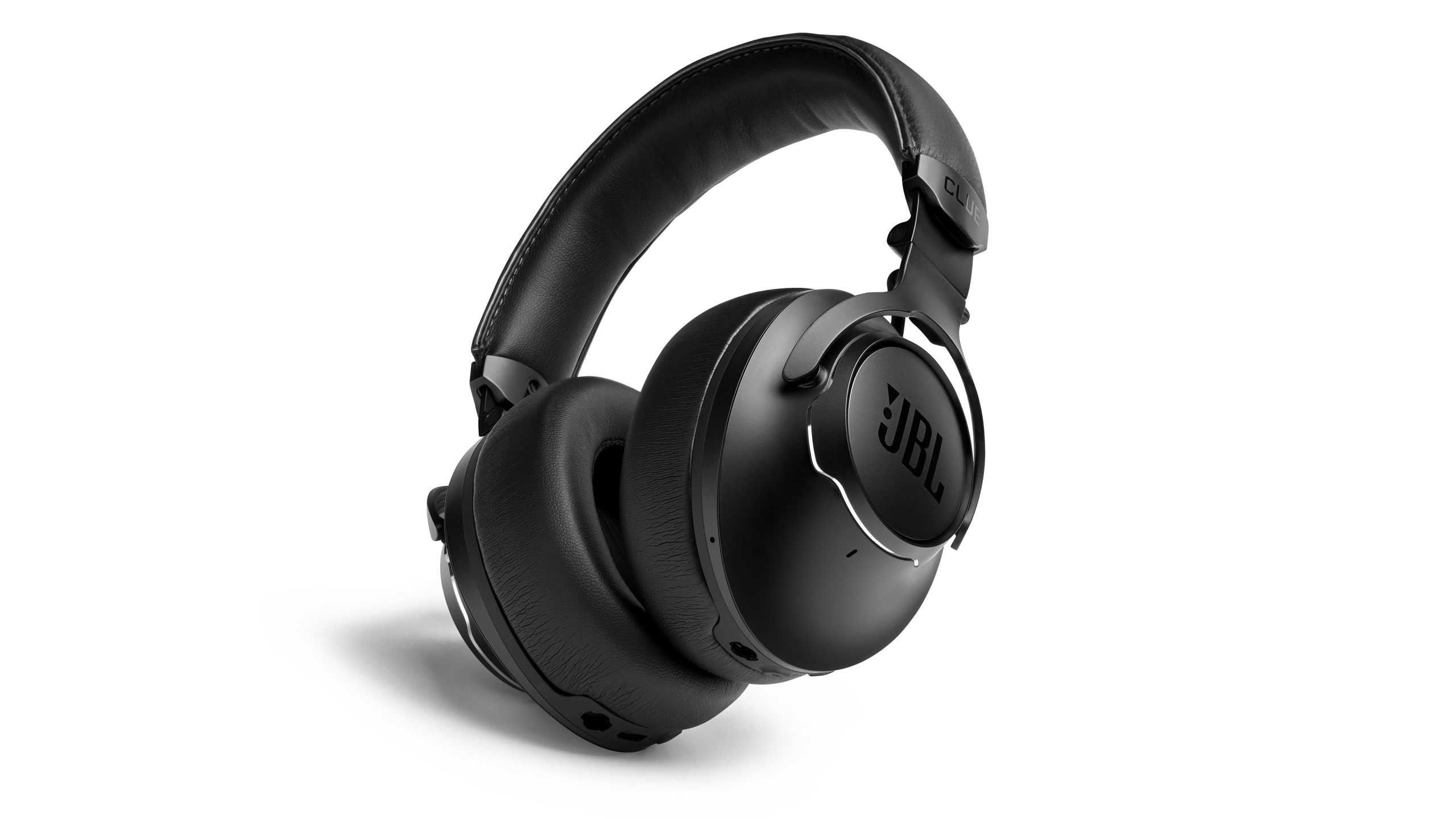
Excellent noise cancellation
Noise reduction is the battlefield where the battle between the major manufacturers of luxury headphones stands today. It is no longer about removing cabin noise during flight (especially not in the corona reality anno 2020, where no one flies), but about an deerly paid break from your surroundings in the office or on the way to and from work.
The means is electronic noise reduction, which in short involves phasing out the noise that penetrates the headphones by adding a phase-reversed recording of the noise from the surroundings to the signal in the headphones. In practice, this is anything but simple, and each headphone manufacturer has its own recipe. In JBL Club One, a technique called True Adaptive Noise Canceling is used, while JBL Club 950NC had to settle for Adaptive Noise Canceling.
No matter what ingredients JBL has put in their secret sauce, the result is tasty. The noise correction is subjectively on a par with Sony’s and far better than with e.g. Bose, DALI and Beyerdynamic. It has not been possible to try Club One in their ultimate element, the jet cabin, but commuting, simulation with white noise and the noise from a construction site handled the adaptive noise correction perfectly.
The sound quality
With the memory of the JBL Club 950NC in relatively fresh memory, it was not with the greatest expectations that I first put the JBL Club One on my head. But even though the two constitute the second most expensive and the most expensive model in the same series, respectively, they are so different that they almost only have the name in common.
JBL Club One sounds good! And not only do they sound good, they are actually among the best sounding noise canceling headphones on the market right now. Especially if you prefer to listen to rock and pop.
When it comes to headphones, one comes across the concept of “signature sound” again and again. The headphones are not made with neutral sound in mind, but the special “sound” that loyal customers are expected to expect.
The frequency curve for JBL’s signature sound is characterized by a moderate increase in the bass range of approx. 6 dB between 20 and 150 Hz and a slightly larger boost between 2 kHz and 7 kHz. It gives a rock’n’roll sound image where there is a slap at the bottom and where the overtones come out clearly. That’s not necessarily correct, but it’s fun! In defense of JBL, it must be said that the other manufacturers also work with a signature sound, so it is not about colored sound versus pure sound – but about which coloring you prefer.
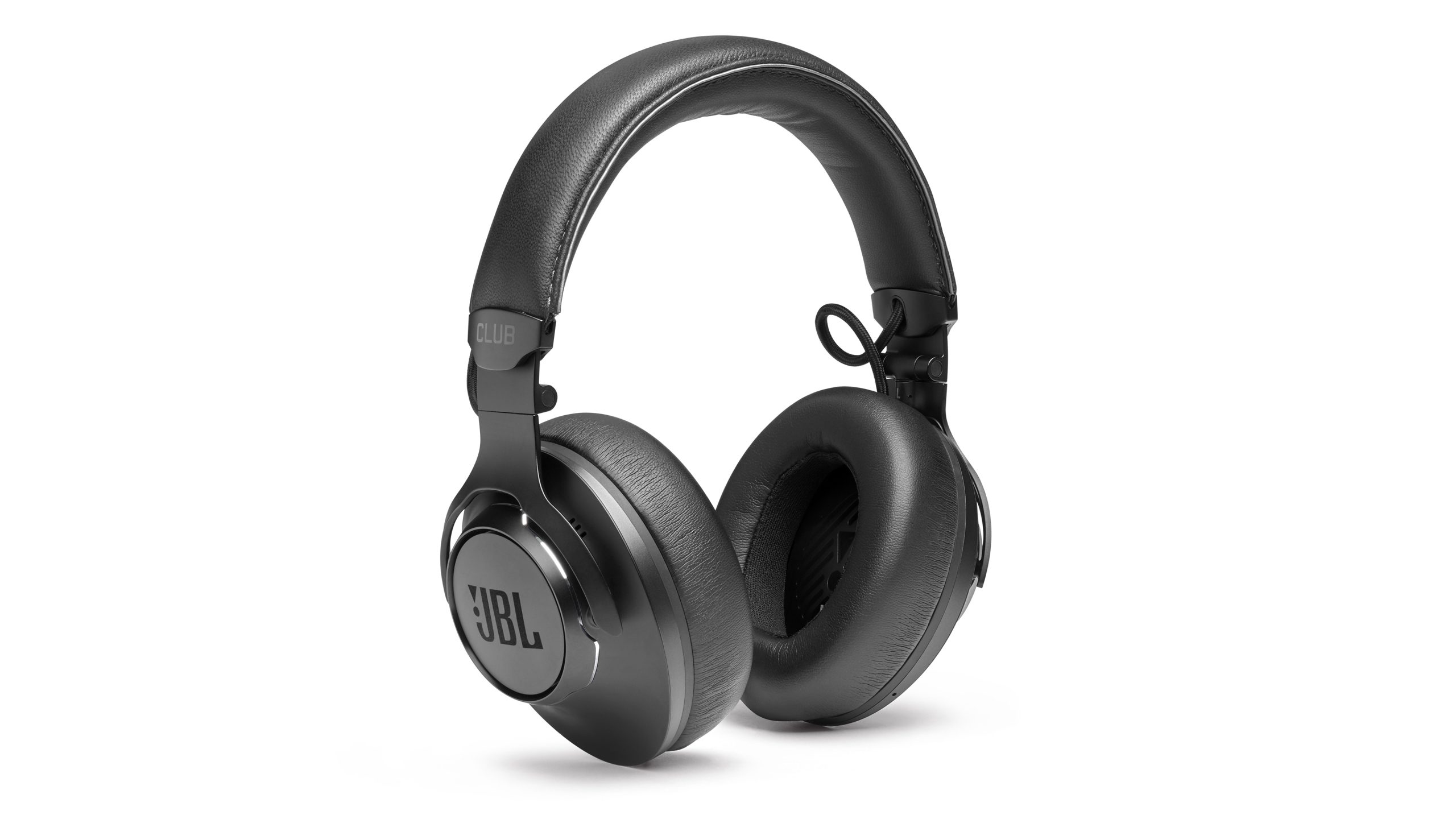
Fun – and control
In JBL Club One, as I said, you get a soundscape with an emphasis on fun. The bass is easy to follow, and you feel like tapping your feet. But where the bass became a muddy swamp with Club 950NC, there is austerity and control in Club One.
Also at the opposite end of the spectrum there is an emphasis, but again Club One gets away with it well because of the uncompromising resolution. The result is a sound with lots of detail and brilliance. As if the guitar strings and cymbals have been polished to an extra shine for the occasion.
With so much emphasis on the bottom and top, the midrange can easily get sacrificed, but the JBL manages to maintain the good quality and nuance, so voices and basic tones may be less prominent, but not directly subdued. The chorus voices on “Right Hand Man” from Hamilton are relatively easy to distinguish from each other. But it does not really get that much attention as it is much more interesting to follow the rhythm.
Even better sound with cable
Using cable with wireless ANC headphones is often an emergency solution. Either because they have run out of power, or to get sound from the entertainment system in the cabin on long flights. But not here; in this case, the sound it better.
With the cable connected, the JBL Club One can be used both as ordinary passive headphones and actively, with noise correction and digital equalization via DSP.
First of all, I have to commend the JBL for having such good control of the sound that the headphones are not dependent on the DSP to sound good. The differences with and without active electronics are actually very small. With the absence of noise correction as the most marked difference.
Best treble in passive mode
In passive mode, Club One has basically the same sound signature as in active mode. The biggest difference is the treble, which here becomes more free and well-resolved. Whether this is due to the larger frequency range (up to 40 kHz) is doubtful. Although I pride myself on having a good and trained hearing, I can guarantee that cannot perceive anything above 18 kHz. The answer is more likely to be sought in the effect of the active electronics.
With the electronics turned on, but still via cable, there is a little more slap in the bass – also in the “neutral” setting. And even though the treble loses airiness, we are still at the absolute best end for active headphones.
JBL Club One are not cheap headphones, and for the same price you can choose between the best from all manufacturers. The Sony WH-1000XM4 has recently tipped their own predecessor oft the throne as the king of silence. The two are relatively close to each other, as Sony has also spiced up the audio signature, but JBL is still more engaging.
When it comes to detailed sound, the DALI IO-6 is also a bidder. They seem more buttoned up, but are probably ultimately more accurate. On the other hand, the noise reduction is not on the league with Sony and JBL.
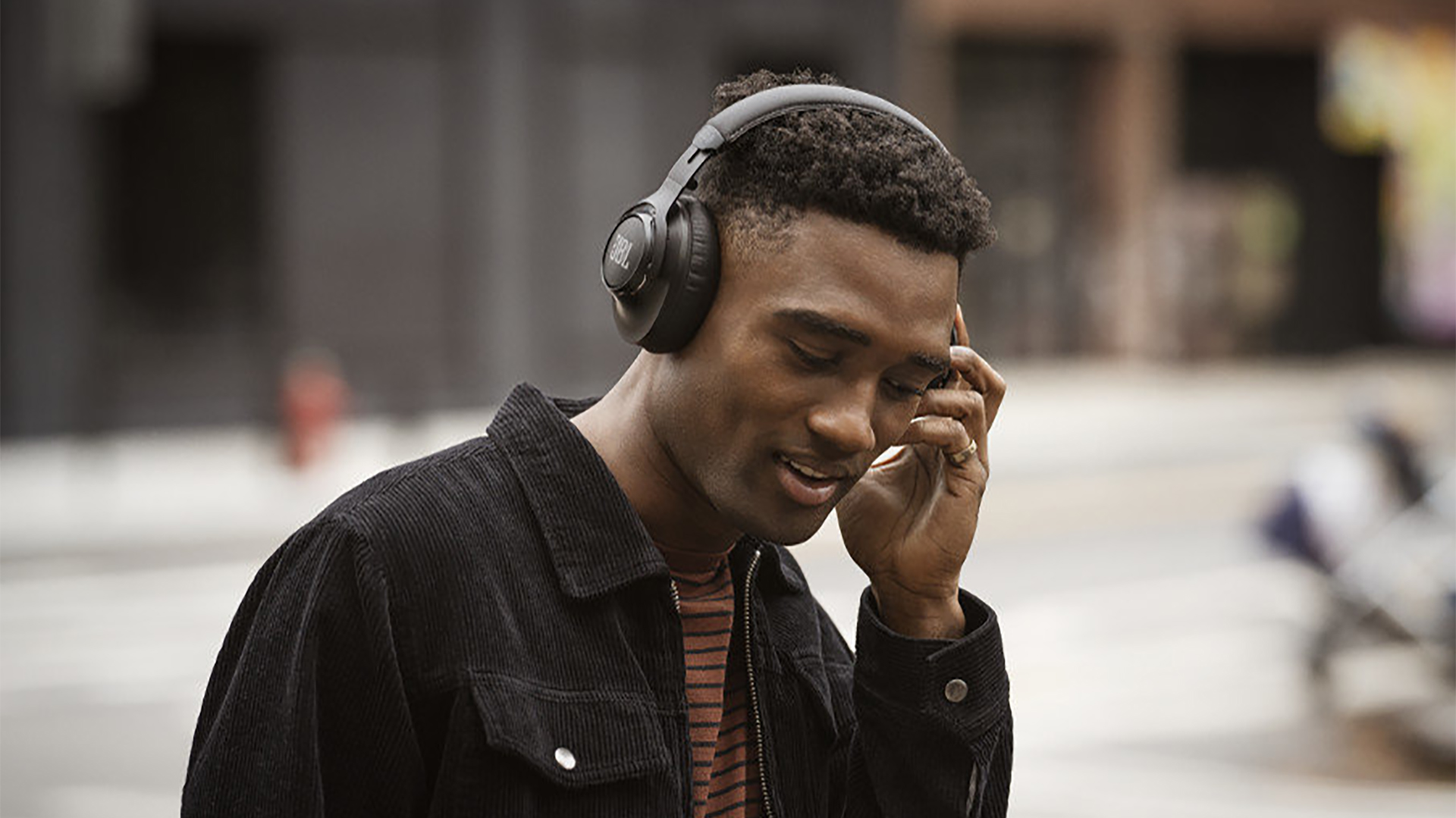
Conclusion
With Club One, JBL – and thus Harman – has joined the elite among noise-reducing luxury headphones! It would be brave, bordering on hubris, to say that here we have the best ANC headphones in the segment. And it ultimately depends on whether you prefer the engaging JBL sound or the slightly more noble Sony sound. But in any case, you should try both on your own head before buying.
Ultimately, we are dealing with a pair of headphones that deliver top quality on both noise reduction and sound. And if you do not like the sound, you can quickly maltreat it beyond recognition with the DJ profiles in the app.

We think
The noise cancellation is top notch and it adapts to the surroundings. The sound is among the most engaging we have heard in ANC headphones. The sound is more fun than correct. Club One is relatively heavy and not nearly as elegant and comfortable as e.g. Sony and Bose.
299 €
Specifications
- Type: Over-ear, closed, wireless, with ANC
- Drivers: 40 mm with graphene diaphragm
- Frequency range, passive: 10 Hz – 40 kHz (tolerance not specified)
- Frequency range, active: 20 Hz – 20 kHz (tolerance not specified)
- Active noise reduction: Yes, true adaptive
- Number of microphones: 6 (2 for speech, 4 for noise reduction)
- Battery life: 23 hours with ANC, 45 hours with Bluetooth only, 25 hours with ANC and cable
- Voice control: Google Assistant, Amazon Alexa
- App: JBL My Headphones
- Connection: USB-C, 3.5 mm stereo minijack, Bluetooth 5.0 (A2DP 1.3)
- Weight: 378 g
- Web: jbl.com
